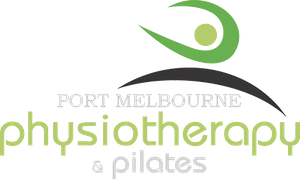One thing we can usually agree on when playing sport is that the worst part is being stuck on the sidelines. It can be an isolating and mentally challenging time. After an extended stint with injury, returning to play is exciting! However, as a physiotherapist and an AFLW player myself, there are some common themes we see that can cause a delay in progress and re-injury.
Below are the top 5 mistakes, and more importantly how to avoid them!
1. Rushing the process
It’s natural to want to get back to your pre-injury performance as quickly as possible, but pushing too hard and too soon is a recipe for error. Returning to full training or competition without a progressive build-up places stress on healing tissues and often leads to flare-ups or new injuries.
What to do instead:
Trust the process and don’t skip any steps. Follow the plan with your physiotherapist and trust that each step along the way will lead you to returning to play.
2. Ignoring Pain or ‘Pushing Through’
The old saying, ‘no pain, no gain’ mindset does not apply when returning to sport. Pain can often be your body’s way of signalling that something is not right. In saying that, pain doesn’t always mean that something is wrong either.
What to do instead:
Learn the difference between expected discomfort (e.g., muscle soreness) and injury-related pain. It is important to discuss your symptoms with your physiotherapist to let them assess you accordingly.
3. Skipping your rehab exercises!
Once symptoms improve, many people stop their rehab exercises prematurely. But just because you’re feeling better doesn’t mean the underlying weaknesses or imbalances have been addressed.
What to do instead:
Stick with your rehab plan until your physio clears you! It will pay off in the long run and possibly even have you performing better than you did pre-injury.
4. Neglecting Sport Specific Rehab and Conditioning
Every sport has different demands. If we don’t condition our body back to that specific sport, we will typically see reinjury. Running on a treadmill isn’t the same as cutting, jumping, or pivoting in a game.
What to do instead:
Incorporate drills that mimic your specific sport or activity. Your physio can help design a progression that prepares you both physically and mentally for return to play.
5. Returning Without Rebuilding Confidence
Physical readiness doesn’t always mean mental readiness. Many people return to sport physically cleared but mentally hesitant, afraid to move at full speed, cut hard, or trust the injured area. This lack of confidence can lead to altered movement patterns and a higher risk of re-injury.
What to do instead:
Work with your physiotherapist to include confidence-building drills in your rehab. Gradual exposure to sport-specific movements in a safe environment helps rebuild trust in your body and improves overall performance. Mental readiness is just as
important as physical readiness.
Final Thoughts
Returning to sport is more than just feeling ready. It’s about being clinically and functionally prepared. The goal isn’t just to get back, but to stay back. To be stronger, smarter, and injury-free.
If you’re unsure about your readiness or want help planning your return, our team at Port Melbourne Physio and Pilates is here to support you every step of the way.
- Ellie

